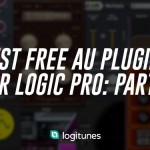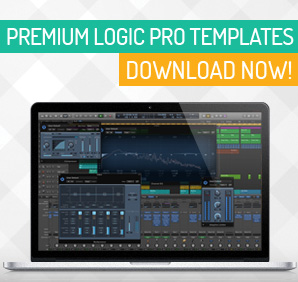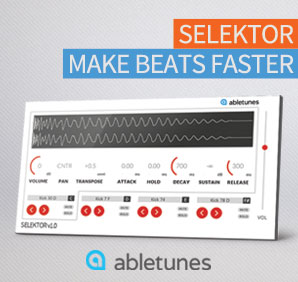History of DAW
The DAW, otherwise known as Digital Audio Workstation, might seem commonplace in today’s technologically advanced world, but this technology has had a long evolution from the primordial days of analog reel to reel. The DAW’s existence and evolution has allowed musicians to not only create music more efficiently, but has also helped to spark a creative revolution bringing about a movement that has helped foster a generation of new music genre’s that once did not exist.
Before the DAW
One of the DAW’s main purposes, aside from composing and being used in the creative writing process, is the recording process. Before the days of the DAW, musicians, studios and engineers were limited to their available technology, which was recording audio on a reel to reel tape machine. Up until 1970 this was the standard.

Although some argue that music sounded better due to the inherent sound of recording to tape, the process wasn’t without its noticeable characteristics which some might argue were less than desirable. Noise and distortion were two common artifacts that were almost always present and to some considered a nuisance. Some on the other hand revered this aspect and found ways to work with this trait to make it part of the creative process.
Another note when discussing tape recordings and the lack of computer recorded audio was the absence of automation, the process of computer guided perimeter adjustments. Automation in the DAW replaced an “All hands on deck” approach to the mixing board. Before the days of automation, studios would essentially have to call in help from other people (aside from on site engineers) to manually operate a mixing board and adjust faders, knobs, or any other settings that needed to be adjusted in real time while a mix was taking place. This process was commonly referred to as “riding the faders”.
Enter the DAW
The creation of the DAW brought about a new way of dealing with multi track audio. It allowed the user to create, record, mix, and even master professional high quality audio right in the computer instead of on costly tape based machines. This could be achieved all while retaining a high fidelity output.
A DAW is a computer based mixing board console like you would see in a big studio, however instead of having a large and costly mixing board made by a big name manufacture, all the components are made to operate inside a computer and be displayed through your monitor. This system does not rely on tape and instead is based on microprocessors.
The earliest stage of the DAW was known as an integrated DAW. This DAW consisted of a mixing console, control surface, audio convertor and data storage all on one device. The other current existing type of DAW is the software DAW. A Software DAW has four basic components- a computer, a sound converter, a digital audio editor and at least 1 input device. The computer is the host for the soundcard and the software that process the audio information. This allows you to record in a multi track format using mono or stereo, edit all the take downs, mix them and master them to create a professional high quality musical composition, all in your computer.
First DAWs
The first attempts to make a DAW were done in the late 1970’s. Because computer hardware was very limited, these attempts were cumbersome and did not yield long lasting results. Not only was the price of storage high, the disk speeds and processing power were extremely slow. Soundstream is the first company to have attempted the first DAW and was called the “Digital Editing System”.
In 1979, a company called Fairlight came about and developed the “Computer Musical Instrument”. This sampler and digital synthesizer would go on to develop a hard-disk recording system and MFX series digital audio workstation. Although the CMI was not a computer based DAW, it did have a CRT monitor and ran an operating system called QDOS. One of the notable features that many companies model to this day was the CMI’s “Page R” software that was a real time graphical pattern sequencer. Some say this gave way to today’s current MIDI sequencing.

Moving into the early 80’s, companies started really pushing the idea of the software DAW, especially now that computers such as the Apple II, Atari ST and the Commodore Amiga had better processing power and could handle the task of digital audio editing. Many of today’s top name software platforms had humble roots during this early time. AVID’s now industry standard Protools started off as an audio editor called “Sound Designer” by Digidesign. This software was primarily used to edit samples for sampling keyboards like the E-mu Emulater II and the Akai S900. Sound Designer was eventually bundled with Mac-compatible hardware to form Sound Tools.
In 1985, the company Opcode founded by Dave Oppenheim was started. By 1986 The company had released two products: the MIDIMAC Seqencer and the MIDIMAC interface for the Macintosh Computer. The Sequencer would later become known as the Opcode Sequencer and then eventually the very popular program known as Vision. Both of these platforms were extremely revolutionary and were utilized by many well known artists at the time.

Another early developer was Mark Of The Unicorn with their software called “Professional Composer”. Following this emerged a music sequencer called “Performer”. Performer took full advantage of the new MIDI standard making it a highly sought after platform for synthesizer users. This software would eventually lead way to “Digital Performer” which is still highly used to this day.
Steinberg Research came in around 1994 when the commodore 64 was a main contender in the early computer music scene. Their first product, appropriately called “Mulitrack Recorder”, is said to have sold less than 50 copies. The concept however was soon transformed into their next platform titled “Pro-16”. Pro-16 was a basic 16 track multi sequencer with a clear single page interface and real time recording. Following the Pro-16 was the Pro-24 followed by Cubit. By 1992 Steinberg finally saw the arrival of one of the industry standards known today as Cubase.

One more notable contender in the DAW market that took early roots in the computer audio recording market was Emagic. Emagic, a software company based in Germany, was known for its early music sequencer called “Creator”. Creator was followed by Notator, which ran on the Atari ST platform. Notator Logic was launched in 1992 for both Atari, Macintosh and Windows. Emagic quickly dropped the “Notator” from the name and was redesigned with a new look and called “Emagic Logic”. In 2002, Apple bought the software and discontinued all Windows based support for the program. Today, Logic still only exists on the Apple platform and is widely regarded as one of the most popular DAWS available.
Mac vs PC: The Early Days
Up until 1993, all DAWs ran on either Atari, Commodore or Apple computers. Programs such as Performer, Creator, Pro-16, Vision, Studer Dyaxis, Sonic Solutions and Sound Designer were all Apple dependent. The first Windows based product that was introduced was Samplitude Studio. Before 1992, this software existed as an audio editor for the Commodore Amiga. Other companies also began to emerge such as IQS (Innovative Quality Software) known today as SAWStudio, Soundscape Digital Technology who was acquired by Mackie and then later by SSL, SADiE, Echo Digital Audio and Spectral Synthesis.
Popular DAWs Today
Today there is a plethora of options when talking about a DAW. One could easily say that today’s marketplace is over saturated with them. Many times we will see a new DAW announced followed by a magazine or blog headline “Do we need another DAW?” What makes one DAW different from another? Competition is the name of the game and while one DAW might be the industry leader there will always be a drive to have more features, faster audio processing, additional modulation routing, quicker sample editing, lower CPU use and so on and so on.
Needless to say, the DAW has a strong foothold in today’s computer aided recording market and although not a complete list, here are some of today’s main software platforms:
AVID – Pro Tools
Steinberg – Cubase, Nuendo
Apple – Logic, GarageBand
Ableton – Live
Bitwig Studios
Sony – ACID
MuTools – MuLab
Magix – Samplitude Pro
Renoise
Motu – Digital Performer
Sonar – Cakewalk
Propellerhead – Reason
Image-Line – FL Studio
PreSonus – Studio One
The DAW has undoubtedly changed the face of multi track recorded audio. Although some artists still use reel to reel tape for its nostalgic qualities, you will find that most professional studios have joined the digital audio revolution for good. Technology in the DAW has greatly improved efficiency, cost, creativity and time and has broken down the barrier between the artist and big name labels that once held all the power when it came to recording your music. Now the power of recording a professional quality song is in the hands of anyone who has access to a computer. Truly a revolution in sound.
Sources:
http://www.prosoundweb.com/article/inside_the_development_we_now_know_as_digital_audio_workstations/P3/
http://en.wikipedia.org/wiki/Digital_audio_workstation
http://www.drtw.net/mus105/pdf/daw_history_outline_key.pdf
http://www.dawsons.co.uk/blog/history-of-the-computer-sequencer
https://www.dubstepforum.com/forum/viewtopic.php?f=8&t=127169
Article by Mac Vaughn













![The Top Five Music Production Myths [Infographic]](https://logitunes.com/blog/wp-content/uploads/2015/07/logoFB-150x150.jpg)


Don’t forget the revolutionary software Soundtracker for the Commodore Amiga, which is the root of all trackers ever existed. I bet that the electronic music scene would’ve looked very much different today if that software was never created.